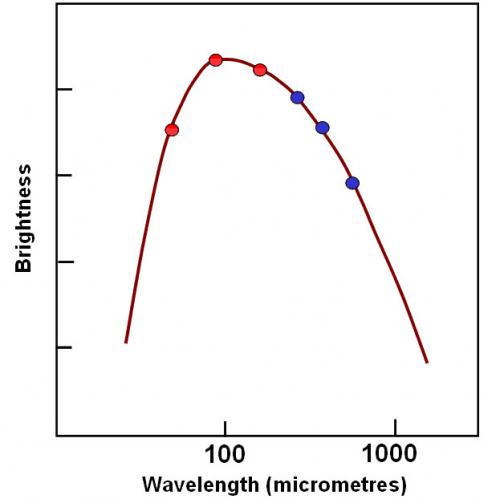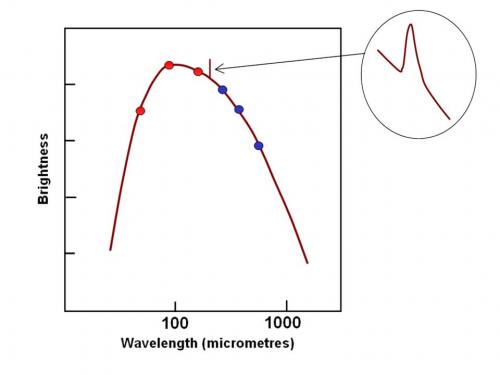

Together the three Herschel instruments cover wavelengths between about 60 and 700 microns. The instruments contain cameras to take pictures in different wavelength bands, and spectrometers to break down the light in even greater detail to study the spectral signatures of different atoms and molecules.
Herschel’s images show us structures and objects that are not seen at all in the visible part of the spectrum, and by combining the pictures taken at different Herschel wavelengths, the thermal spectrum of each pixel in an image can be plotted (by literally joining the dots). This will allow astronomers to find the object’s temperature and its total energy output, and to study the nature of the dust too.
But the clouds from which stars form are made of dust and gas – in fact most of the material is in the form of gas. All three Herschel instruments have spectrometers which can zoom in on very narrow wavelength bands to examine the radiation coming from particular atoms and molecules in the gas. These appear as small features on top of the thermal spectrum, such as the one illustrated below. The wavelength range that Herschel covers is teeming with such spectral signatures from atoms like carbon, oxygen, and nitrogen, and molecules such as carbon monoxide (CO), and water (H2O). These are the constituents of planets such as the Earth, and indeed of ourselves. With Herschel we will be able to study them in space and how they are involved in the formation of new stars and planetary systems. From Herschel’s observations it is be possible to find out what distant objects are composed of, the temperature, the density, and how the gas is moving – for instance whether a cloud is collapsing.
